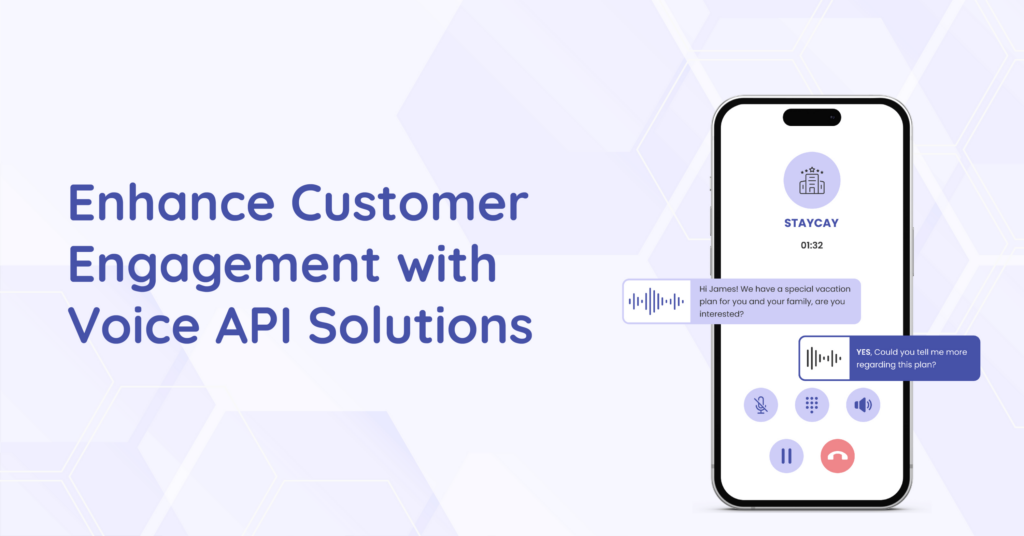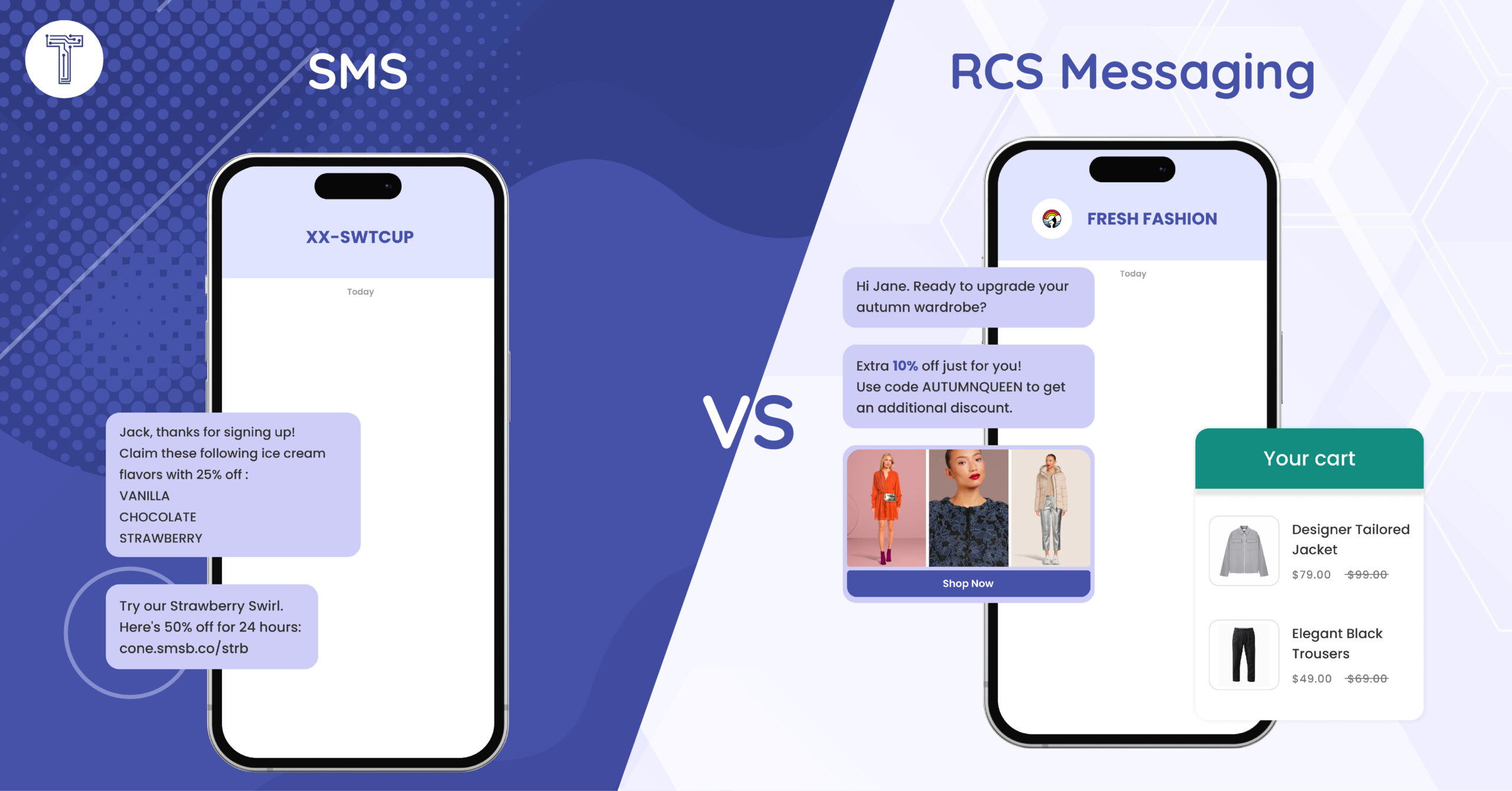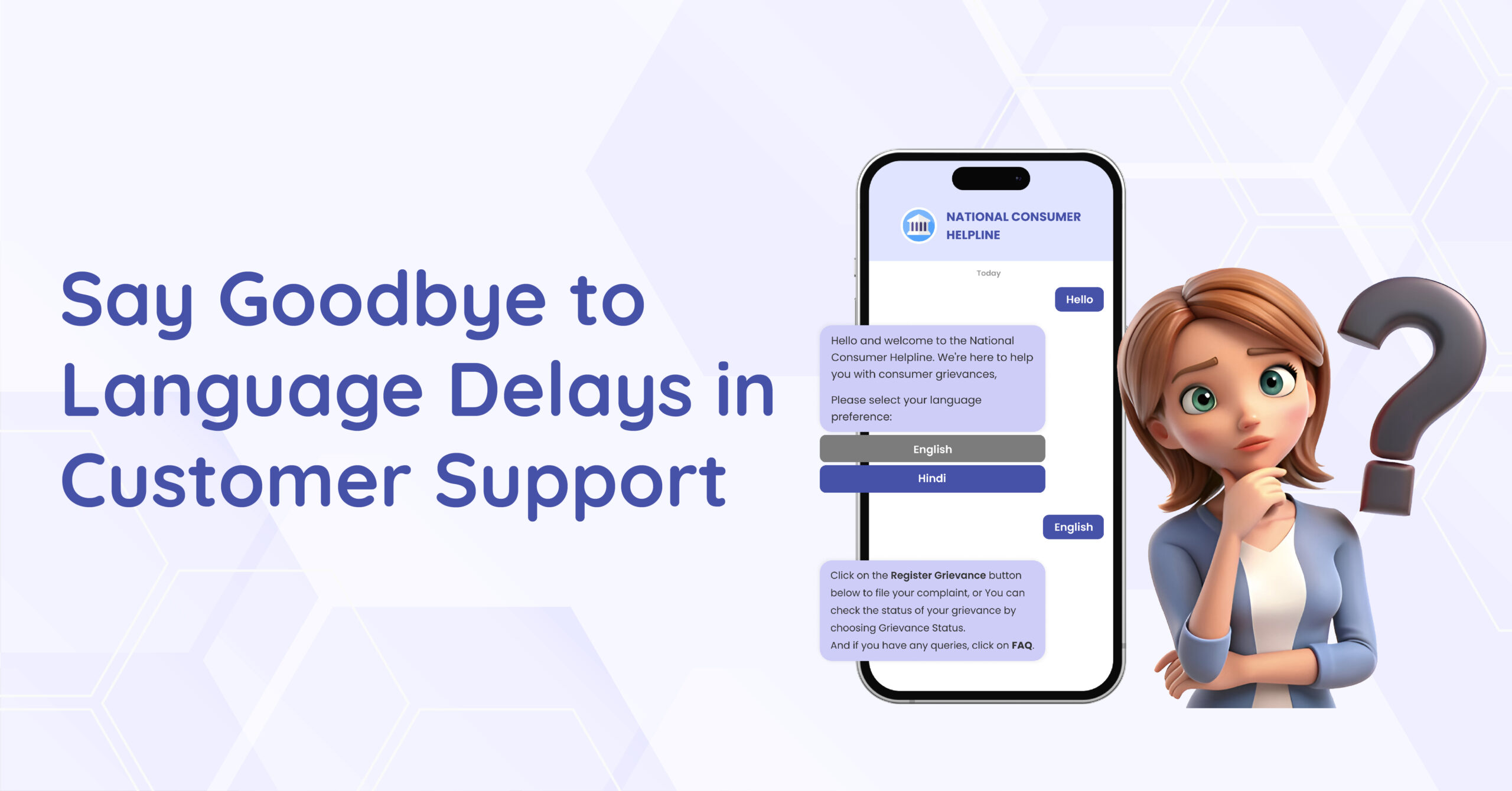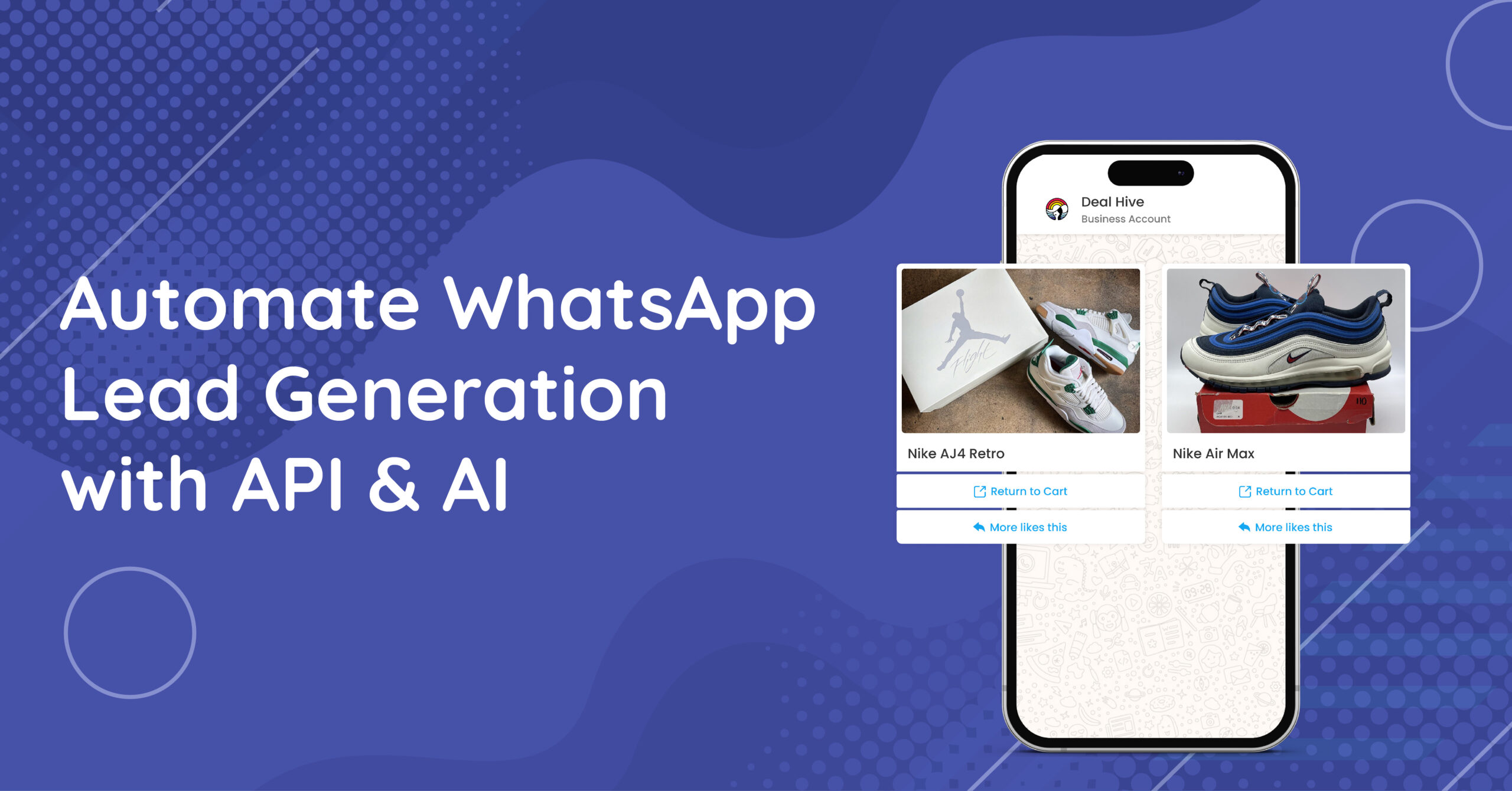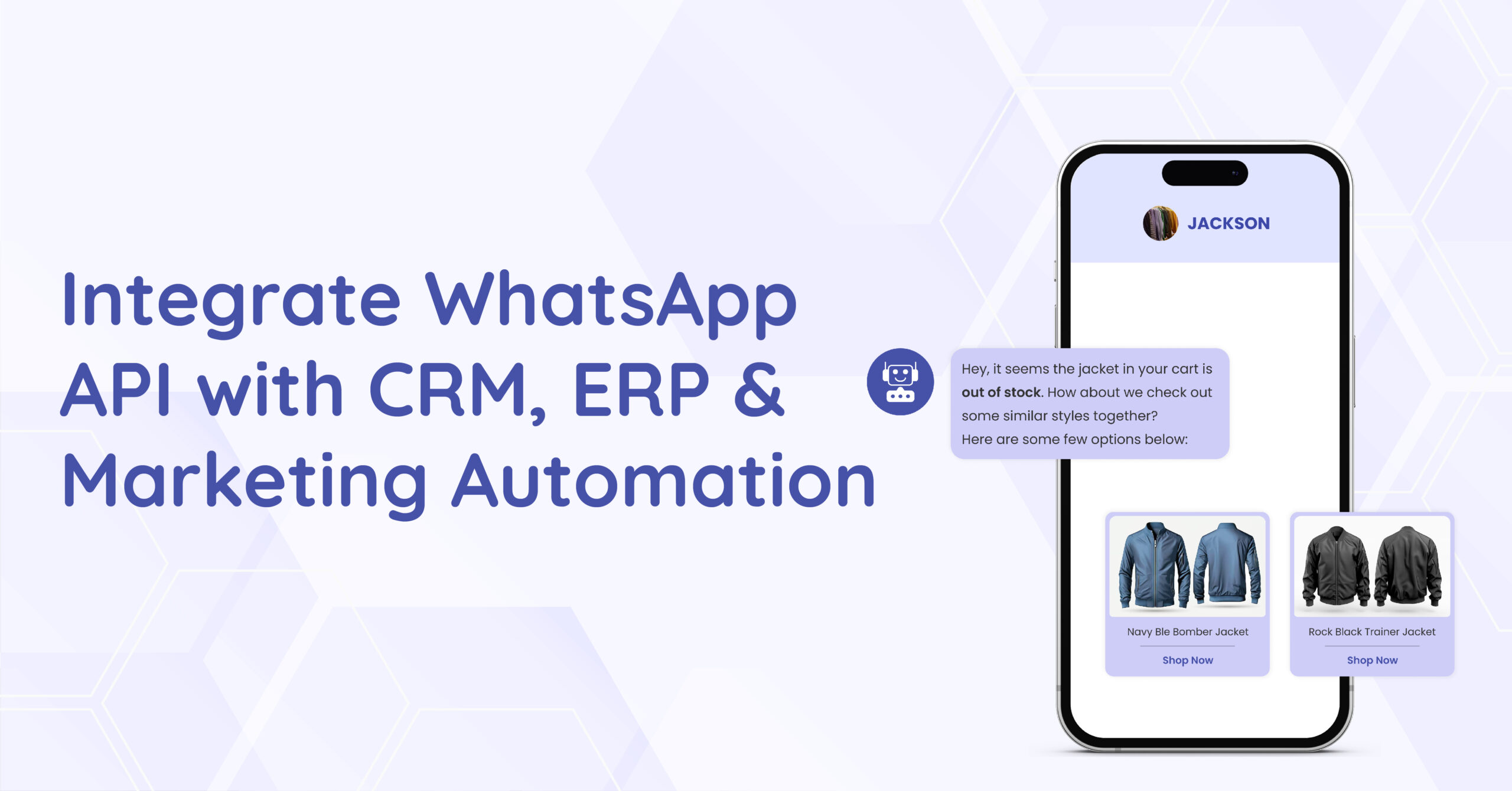Personalized customer interactions enhance customer satisfaction and encourage positive word-of-mouth referrals. By exceeding customer expectations through customised experiences, businesses can distinguish themselves from competitors, leading to increased profitability and sustained growth.
At Techno Core Logic, we recognize the importance of personalized interactions and have implemented Voice APIs to facilitate natural, conversational engagements. This technology enables us to better understand and meet individual customer needs, resulting in more meaningful and effective customer service experiences.
What is Voice API?
A Voice API (Application Programming Interface) allows developers to integrate voice communication capabilities into applications, websites, or services without the need for traditional telephony infrastructure. This integration facilitates seamless voice interactions, enabling features like making and receiving calls directly within an application.
Benefits of Voice API
Implementing a Voice API offers numerous advantages:
- Enhanced Customer Experience: By integrating a Voice API, businesses can offer personalized and efficient customer support services within their applications or browsers, reducing call traffic and wait times in contact centers.
- Scalability: Voice APIs enable businesses to scale their communication solutions effortlessly, accommodating growth without significant infrastructure changes.
- Cost Efficiency: By leveraging cloud-based voice solutions, companies can reduce costs associated with traditional telephony systems.
Voice API vs. Traditional IVR
Traditional Interactive Voice Response (IVR) systems often rely on touch-tone inputs, leading to rigid and sometimes frustrating user experiences. Conversely, Voice APIs, especially when combined with conversational AI, allow customers to use natural language, enhancing interaction fluidity and satisfaction.
| Aspect | Voice API | Traditional IVR |
| User Interaction | Allows natural language conversations, enabling users to speak freely and describe their issues in their own words. | Relies on touch-tone inputs, requiring users to navigate through predefined menus using keypad entries. |
| Flexibility | Highly adaptable, capable of understanding complex queries and providing personalized responses. | Rigid structure with limited ability to handle complex or unexpected queries, often leading to user frustration. |
| Personalization | Integrates with customer data to offer interactions based on user history and preferences. | Offers a uniform experience to all users, lacking the ability to customize interactions based on individual customer data. |
| Scalability | Easily scalable to accommodate growing business needs without significant infrastructure changes. | Scaling requires substantial investment in additional hardware and infrastructure, making it less adaptable to rapid growth. |
| Integration Capabilities | Seamlessly integrates with various digital channels and business tools, such as CRM systems, to provide a unified customer experience. | Operates as a standalone system with limited integration capabilities, often resulting in fragmented customer service experiences. |
Voice API Use Cases
Voice APIs are versatile and can be applied across various industries:
- Call Centers: Integrating Voice APIs in call centers streamlines operations, enabling features like call routing, recording, and analytics, leading to improved efficiency and customer satisfaction. Agents can access customer information in real-time, allowing for personalized interactions and quicker issue resolution.
- Customer Support: Businesses can offer in-app voice support, allowing customers to connect with representatives directly through the application, enhancing convenience and support quality. This approach reduces the need for customers to switch between different platforms, creating a seamless support experience.
- Notifications and Alerts: Automated voice calls can be used for sending reminders, confirmations, or emergency alerts, ensuring timely and effective communication. For instance, healthcare providers can use voice APIs to remind patients of upcoming appointments or medication schedules.
- Surveys and Feedback: Companies can conduct voice-based surveys to gather customer feedback, providing a more engaging alternative to traditional text-based surveys. This method often yields higher response rates and more detailed insights.
- Voice-Activated Services: Businesses can develop voice-activated applications, such as virtual assistants or voice-controlled devices, enhancing user engagement and accessibility.
Voice API Integration Guide
Integrating a Voice API into your existing systems involves several key steps:
- Identify Requirements: Determine the specific functionalities needed, such as call handling, recording, or speech recognition. Assess how these features align with your business objectives and customer expectations.
- Choose a Provider: Select a Voice API provider that aligns with your business needs and offers robust support and documentation. Consider factors such as scalability, reliability, and compatibility with your existing systems.
- Develop and Test: Utilize the provider’s SDKs and APIs to integrate voice capabilities into your application, followed by thorough testing to ensure reliability. This phase should include testing for various scenarios, such as different call volumes and user interactions, to identify and address potential issues.
- Deploy and Monitor: After successful testing, deploy the solution and continuously monitor performance to address any issues promptly. Implement analytics to track key performance indicators (KPIs) such as call quality, customer satisfaction, and system uptime.
- Training and Support: Ensure that your team is trained to manage and maintain the Voice API integration. Provide ongoing support to address any technical challenges and to optimize the system based on user feedback.
Voice API Security Features
Security is paramount in voice communications. Voice APIs often come equipped with features like encryption, authentication, and compliance with industry standards to protect sensitive information and ensure secure interactions.
Key Security Features:
- Encryption: Voice data is encrypted during transmission and storage, preventing unauthorized access and ensuring confidentiality.
- Authentication: Robust authentication mechanisms verify the identities of users and devices, reducing the risk of fraudulent activities.
- Compliance: Adherence to industry standards and regulations, such as GDPR or HIPAA, ensures that voice communications meet legal and ethical requirements.
- Access Controls: Granular access controls allow businesses to define permissions, ensuring that only authorized personnel can access
Conclusion
Integrating Voice APIs into customer service strategies is becoming increasingly essential for businesses aiming to enhance communication efficiency and customer satisfaction. The advantages, including improved customer experiences, scalability, and cost-effectiveness, make Voice APIs a valuable asset in modern business communication.
At Techno Core Logic, we specialize in providing custom communication solutions that incorporate advanced voice technologies. Our Voice API services are designed to enhance your customer interactions, streamline operations, and support your business objectives.
Partner with us to enhance your customer service approach, leveraging the capabilities of Voice APIs to create meaningful and impactful interactions. Experience the next level of digital communication with Techno Core Logic, where every conversation matters.

